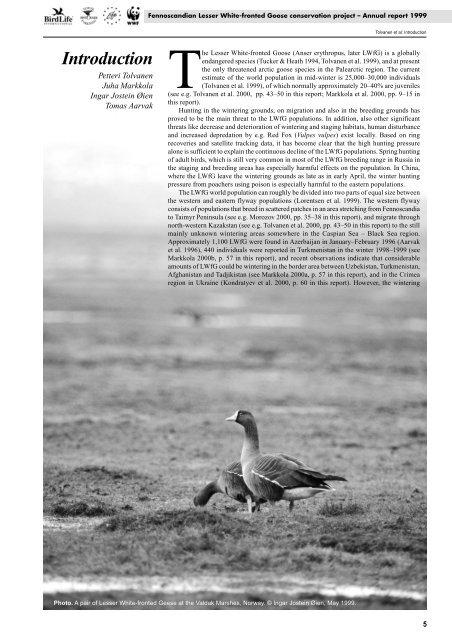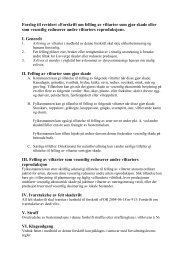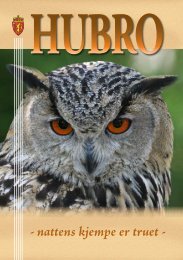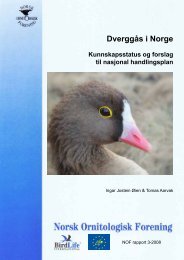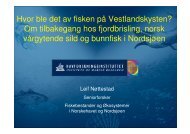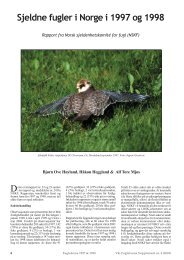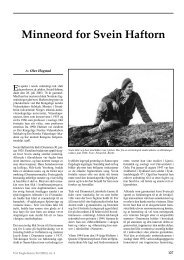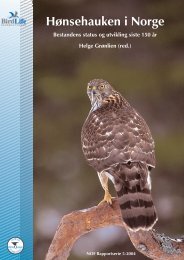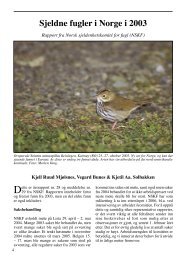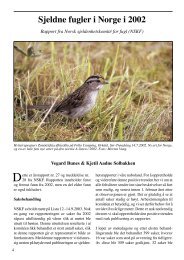Fennoscandian Lesser White-fronted Goose conservation project ...
Fennoscandian Lesser White-fronted Goose conservation project ...
Fennoscandian Lesser White-fronted Goose conservation project ...
You also want an ePaper? Increase the reach of your titles
YUMPU automatically turns print PDFs into web optimized ePapers that Google loves.
Introduction<br />
Petteri Tolvanen<br />
Juha Markkola<br />
Ingar Jostein Øien<br />
Tomas Aarvak<br />
<strong>Fennoscandian</strong> <strong>Lesser</strong> <strong>White</strong>-<strong>fronted</strong> <strong>Goose</strong> <strong>conservation</strong> <strong>project</strong> – Annual report 1999<br />
Tolvanen et al: Introduction<br />
The <strong>Lesser</strong> <strong>White</strong>-<strong>fronted</strong> <strong>Goose</strong> (Anser erythropus, later LWfG) is a globally<br />
endangered species (Tucker & Heath 1994, Tolvanen et al. 1999), and at present<br />
the only threatened arctic goose species in the Palearctic region. The current<br />
estimate of the world population in mid-winter is 25,000–30,000 individuals<br />
(Tolvanen et al. 1999), of which normally approximately 20–40% are juveniles<br />
(see e.g. Tolvanen et al. 2000, pp. 43–50 in this report; Markkola et al. 2000, pp. 9–15 in<br />
this report).<br />
Hunting in the wintering grounds, on migration and also in the breeding grounds has<br />
proved to be the main threat to the LWfG populations. In addition, also other significant<br />
threats like decrease and deterioration of wintering and staging habitats, human disturbance<br />
and increased depredation by e.g. Red Fox (Vulpes vulpes) exist locally. Based on ring<br />
recoveries and satellite tracking data, it has become clear that the high hunting pressure<br />
alone is sufficient to explain the continuous decline of the LWfG populations. Spring hunting<br />
of adult birds, which is still very common in most of the LWfG breeding range in Russia in<br />
the staging and breeding areas has especially harmful effects on the population. In China,<br />
where the LWfG leave the wintering grounds as late as in early April, the winter hunting<br />
pressure from poachers using poison is especially harmful to the eastern populations.<br />
The LWfG world population can roughly be divided into two parts of equal size between<br />
the western and eastern flyway populations (Lorentsen et al. 1999). The western flyway<br />
consists of populations that breed in scattered patches in an area stretching from Fennoscandia<br />
to Taimyr Peninsula (see e.g. Morozov 2000, pp. 35–38 in this report), and migrate through<br />
north-western Kazakstan (see e.g. Tolvanen et al. 2000, pp. 43–50 in this report) to the still<br />
mainly unknown wintering areas somewhere in the Caspian Sea – Black Sea region.<br />
Approximately 1,100 LWfG were found in Azerbaijan in January–February 1996 (Aarvak<br />
et al. 1996), 440 individuals were reported in Turkmenistan in the winter 1998–1999 (see<br />
Markkola 2000b, p. 57 in this report), and recent observations indicate that considerable<br />
amounts of LWfG could be wintering in the border area between Uzbekistan, Turkmenistan,<br />
Afghanistan and Tadjikistan (see Markkola 2000a, p. 57 in this report), and in the Crimea<br />
region in Ukraine (Kondratyev et al. 2000, p. 60 in this report). However, the wintering<br />
Photo. A pair of <strong>Lesser</strong> <strong>White</strong>-<strong>fronted</strong> Geese at the Valdak Marshes, Norway. © Ingar Jostein Øien, May 1999.<br />
5


